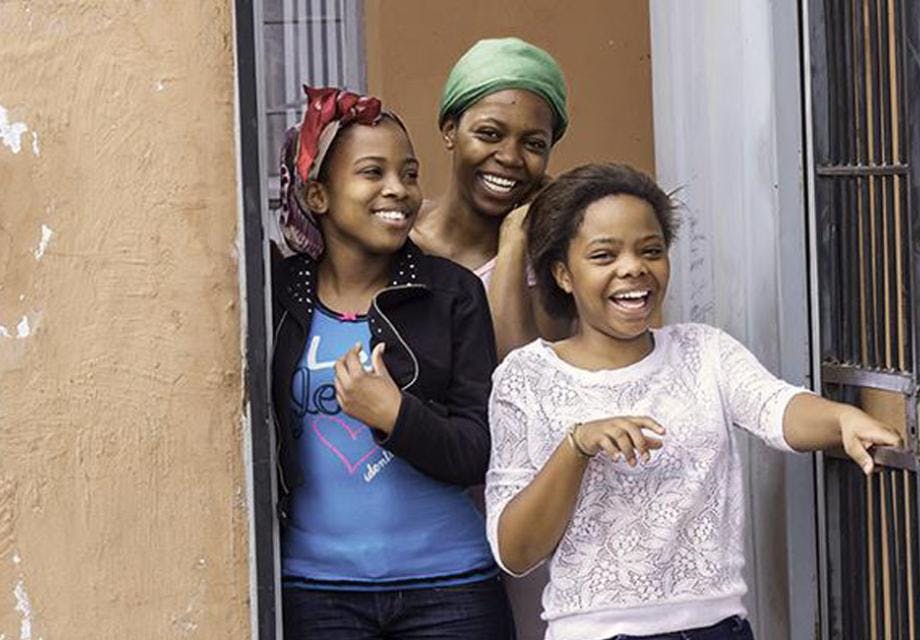Zimbabwe’s youth sexual and reproductive health strategy a success
Caitlin Mahon
06 August 2019
Multiple complementary interventions scaled up at the national level in Zimbabwe results in improved sexual reproductive health outcomes for young people.
Zimbabwe’s national adolescent and youth sexual and reproductive health (ASRH) strategy successfully increased rates of HIV testing and treatment of sexually transmitted infections (STI), while reducing the HIV prevalence trajectory for young people in the country over five years.
In an evaluation of their national programme implemented between 2010 and 2015, investigators report a 36.6% increase in HIV testing and a 30.4% increase in treatment of STIs among youth engaged in the entire five-year programme. The HIV prevalence trajectory was also reduced by 0.7%, but the strategy did not have any significant impact on condom use or STI prevalence rates.
The 2005/2006 Zimbabwe Demographic Health Survey (ZDHS) had highlighted poor reproductive health outcomes for young people in the country, with high rates of STIs, low uptake of HIV testing and high-risk sexual activity involving paid sex or sex with an older partner. Alongside these were barriers to accessing youth-friendly services.
The findings sparked the launch of the first ASRH strategy, running from 2010 to 2015. Through a multi-sectoral and participatory method involving young people at every stage, the strategy sought to challenge key barriers to sexual and reproductive health for youth in the region.
These included a lack of comprehensive social and behaviour change communication (SBCC) materials; lack of life skills education, inadequate ASRH outreach services and prohibitive transport costs to referral health facilities. Age of consent for HIV testing, poor awareness of ASRH issues among health staff, and no defined strategy for ASRH in the country were also challenges the strategy sought to address.
To analyse the success of the programme, the investigators evaluated the impact on condom use, STI treatment, HIV testing, HIV prevalence and STI prevalence over the five years. They then disaggregated the data for gender, household wealth and geographic location.
They also looked at the effect of intensity of programmes. Manicaland province received the highest number of interventions and was used as the treatment group, which was then compared to Mashonaland East and Central provinces which received the least number of programmes and was used as the control.
The study selected young people aged 15–19 years old in 2010 as the baseline treatment group as they benefited from the entire five-years strategy. By the end of implementation in 2015, the cohort was aged 20–24 and used as the post-strategy treatment group.
The control consisted of the 25–29 years age group in 2010 that never benefitted from the strategy and were exposed to the business-as-usual sexual and reproductive health approach. By 2015, this cohort was aged 30–35 and were used as the post-strategy control group.
Significant increases in treatment for STIs and HIV testing were reported. At baseline, only 28.2% of STI infected young people sought treatment, which increased to 51.7% post-strategy. The proportion of the targeted group who had ever tested for HIV before the strategy was 18.6%, which increase to 76.9% post-intervention.
While HIV prevalence had increased in both control and treatment groups pre- and post-strategy – the rate of increase was smaller in the treatment group at a statistically significant 0.7% lower trajectory.
The strategy had a statistically insignificant increase in condom use over the five years, with the overall effect of the ASRH strategy on the treatment group increasing by 9.7%. STI prevalence also increased, but with no significant effect from the ASRH strategy.
In the subgroup analysis, of-note findings were that the ASRH program increased HIV testing for both males and females, but it was more pronounced in females. HIV testing also went up significantly across wealth status and place of residence – but it was much higher in urban settings than in rural settings.
Further rural/urban divide was highlighted in that the fall in HIV prevalence was significant among urban youth, but there was no significant change among those in rural settings. STI prevalence also increased among rural youth, with no significant change among urban youth.
The authors had hypothesised that more intensive programming would result in better health outcomes for young people and adolescents, but in their analysis of the Manicaland relative to Mashonaland provinces, they found no evidence of better outcomes for condom use, STI treatment, HIV testing and HIV prevalence.
These specific findings suggest that they key for improving health outcomes in this group lies not in allocating more resources, but in being more specific in the delivery approaches to target HIV hotspots and rural areas.
The fact that the strategy was successful in decreasing the HIV prevalence trajectory and increasing HIV testing, but it did not have any impact on condom use, suggests that other prevention methods were more successful for this group. These included reducing risk behaviour such as extramarital, commercial and casual sex relationships and increasing comprehensive sexuality education, mass media, church-based prevention activities and scale-up of HIV testing.
The authors noted that condom promotion was hampered by the fact that they could not distribute condoms to young people in schools by law – which lessened the impact of sex education here.
“We recommend better design of interventions and alignment of the strategy to laws to reduce barriers of the strategy’s implementation,” commented the authors in their discussion. “We also recommend better coordination of the various implementers to facilitate synergies to ensure better results of the strategy.”
Get our news and blogs by email
Keep up-to-date with all our latest news stories and blogs by signing up to the Be in the KNOW news digest.
